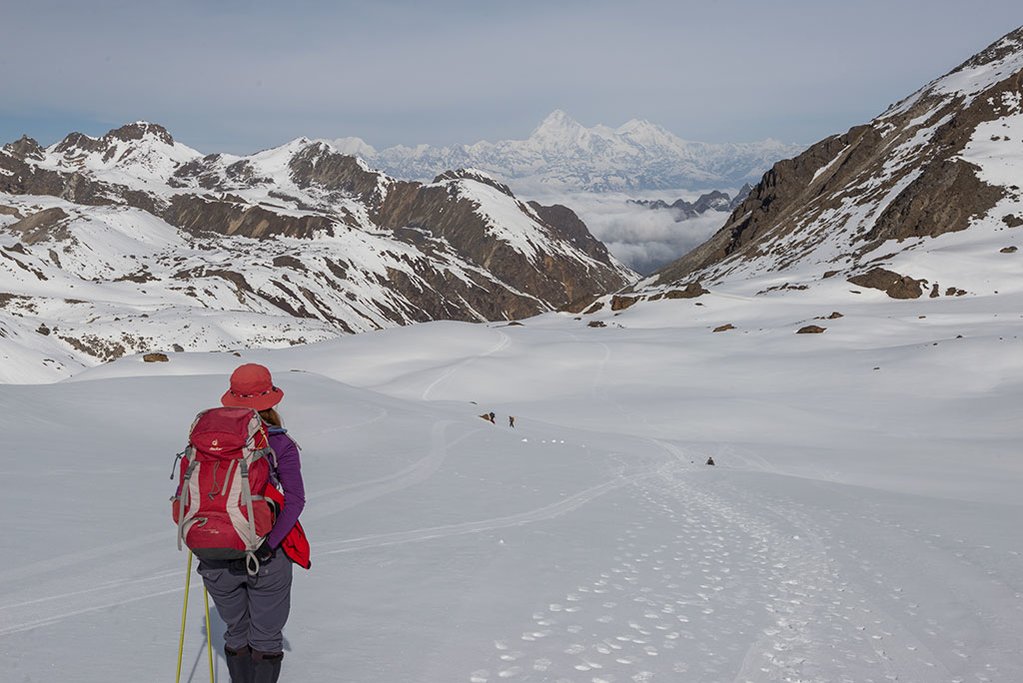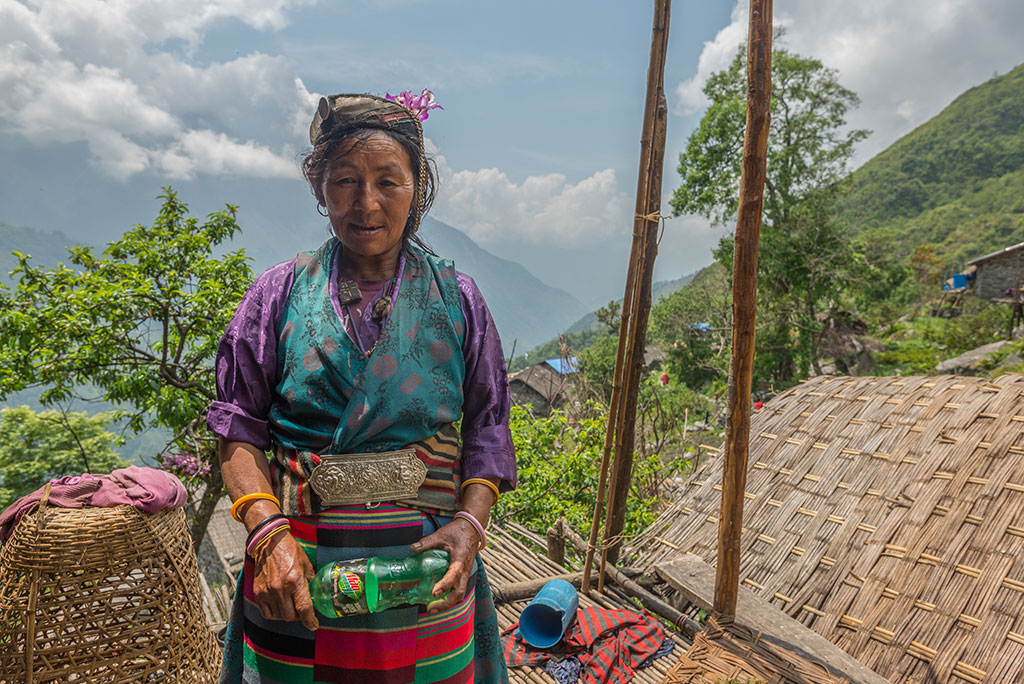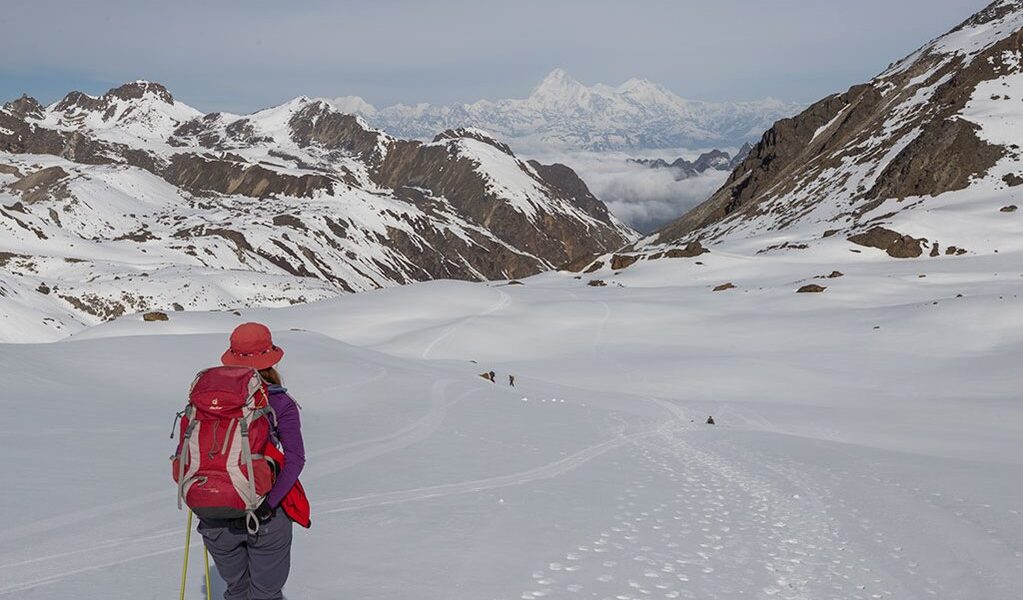
Nepal is a land of breathtaking beauty around every corner, ancient cultures, adventures and mind-boggling diversity. So what makes a crossing of one of many of Nepal’s high pass worth writing about?
## Highlights of an Eastern Nepal Trek
* Embark on a journey to the serene tea-station of Ilam, a hidden gem of Nepal that offers breathtaking views and a tranquil atmosphere, far removed from the bustling tourist hotspots.
* Experience the thrill of traversing a newly established route that intricately connects the most elevated and challenging trekking paths in Nepal, stretching majestically from the easternmost reaches to the western frontiers.
* Trace the historical footsteps of pioneering mountaineers by re-discovering and navigating the original, time-honored trail to Everest, a path utilized by intrepid adventurers in the early decades of the 20th century, offering a unique perspective on the legendary peak.
* Find solace and cultural immersion as you camp in the isolated and culturally rich Olangchun Gola village, where the local Tibetan community meticulously hand-spin sheep wool into traditional carpets, preserving an ancient craft and heritage.
## Overview: A Journey into Eastern Nepal’s Untamed Beauty
The adventure begins with the journey itself, a multi-day trek to the far eastern reaches of Nepal, a land of incredible beauty and cultural diversity. Our Kamzang Journeys trekking team initiated this remarkable journey with a flight into Bhadrapur, a city nestled in Nepal’s steamy terai region. Bhadrapur served as our jumping-off point for an unforgettable trek along a section of the Great Himalayan Trail. Here, in the southeasternmost part of Nepal, a unique blend of cultures unfolds, where the locals converse in a mix of Hindi and Nepali, showcasing the region’s diverse influences. The population is primarily Hindu, adding to the cultural tapestry, and the local vegetable markets burst with vibrant colors, displaying an array of tropical fruits that thrive in this fertile land. Before venturing higher, we offered a silent prayer, hoping to avoid any encounters with malaria in the sweltering, rural environment of Bhadrapur. This was due to the fact that we had mistakenly forgotten to bring along malaria prophylactics for a trek that would take us deep into the heart of the Himalaya.
From Bhadrapur, the true adventure commenced as we embarked on a winding journey along narrow, precipitous roads in a hired jeep, a vehicle that became our trusty companion. The jeep immediately descended back down into the steep-sided river valleys, deftly navigating a series of switchbacks that elevated us 2000 meters to traverse the numerous ridges that defined the landscape. Our destination was the renowned tea-station of Ilam, a destination that remains one of Nepal’s best-kept secrets, especially for Westerner tourists. However, it holds a prominent place in the hearts of the Nepalis, who appreciate its scenic beauty and tranquility. If your visit coincides with the right time of year, you might have the opportunity to experience the local carnival, an event filled with joyous celebrations and a traveling Ferris wheel that offers panoramic views of the surrounding area. Alternatively, you can immerse yourself in the verdant beauty of the tea plantations, sampling the locally grown teas and sweets while enjoying the tranquil ambiance of one of Nepal’s most picturesque hill-stations.
(Image of a Sherpa woman in a local village near Makalu)
After another full day of traversing undulating roads, we finally arrived at Taplejung, the official starting point of our epic trek from Kanchenjunga to Makalu Barun. This trek forms part of a new and ambitious route that seamlessly connects the highest trekking routes in Nepal, spanning from east to west. We began this incredible journey near the eastern end, with the goal of trekking through the shadows of two of the world’s highest and most awe-inspiring mountains: Kanchenjunga and Makalu. Our path was heading towards the eastern approaches to the Everest region. This particular route, originating from Tumlingtar, held historical significance as it was the only trail to Everest utilized by pioneering mountaineers in the early 20th century, individuals like Shipton, who dared to explore the unknown.
The Kanchenjunga and Makalu regions are inhabited by a rich tapestry of ethnic groups, each contributing to the region’s cultural diversity. These groups include the Limbu, Sherpa, Tibetan, Rai, Gurung, Magar, Newar, and Tamang people, each with their own distinct traditions and customs. The lower sections of the region are adorned with hillsides covered in lush cardamom plantations, creating an endlessly fascinating landscape. As we climbed higher, the villages transitioned from predominantly Limbu and Rai communities to Sherpa and Tibetan settlements. We navigated steep trails, traversed landslides, and carefully avoided dangerous rockfalls, finally reaching the sublimely beautiful Pang Pema, also known as North Kanchenjunga Base Camp. During our trek, we experienced the devastating 25 April earthquake in one small Sherpa village, narrowly escaping a large rockfall. Although the muddy and exposed trail beneath our feet shook violently as we hiked high on exposed trails, we were only vaguely aware of the widespread destruction that was occurring in other parts of Nepal.
One of the many unforgettable highlights of the Kanchenjunga trek was crossing the challenging Nango La pass, where we found ourselves sinking up to our waists in rotten snow as we descended. The culmination of this challenging day was camping at the remote Olangchun Gola village. Here, the local Tibetan villagers engage in the traditional craft of weaving carpets from hand-spun sheep wool. They also practice ‘koras’ around their ancient Buddhist monastery, a testament to their spiritual devotion, and are renowned for producing some of Nepal’s best tongba, a fermented millet beer that is a local specialty.
(Image of the Lumba Sumba pass)
The Lumba Sumba pass, soaring to an elevation of 5160 meters, presented an otherworldly experience, a sublimely beautiful landscape that showcased the majestic Kanchenjunga, towering at 8598m, to the west, and the imposing Makalu, reaching 8485m, to the east. These peaks hold the distinction of being the third and fifth highest peaks in the world, respectively. Reaching the high camp itself was an adventure, requiring us to break trail through snowfields along a snaking river in the intense midday sun, a truly exhausting task for the porters who were laden with our camping gear.
(Images of the Lumba Sumba Trek in Nepal)
We embarked on an early morning start, ascending straight up an incredibly snowy slope. We relied on the deep snow steps that our dedicated staff had painstakingly created the evening before. After crossing a vast and pristine snowfield, the sunrise painted the crusted white world with a rosy glow, creating a breathtaking spectacle. We then trekked up to what we initially believed was a single pass, but soon discovered was actually a double pass. We named these the Lumba La and the Sumba La, connected by a somewhat dangerous, narrow, and precipitous trail that demanded caution and respect. After taking a moment to admire the incredible Himalayan panorama from the top of the pass, the real fun began as we glissaded, or alternatively slid on pack covers, down the western snowfields, marking an exciting entrance into the Makalu Barun region.
The Makalu region is defined by the presence of the Arun and Tamor rivers, massive river systems that originate from the high Himalayan glaciers. Over millennia, these rivers have carved deep gorges, which are now farmed and populated with villages that cling to the steep slopes. This part of the trek was notably more remote, adding to the sense of adventure and isolation. Our journey continued as we experienced the second of the two major April and May Nepal earthquakes in a village situated high above a steep-sided river valley, a stark reminder of the region’s vulnerability to natural forces.
We continued our trek with our Tamang porters, carefully navigating narrow stone steps that wound hundreds of meters above the valley below, along barely visible trails. The path was a complex tangle of rocks, tree roots, and old tree trunks that had been ingeniously transformed into bridges, some of which were so precarious that I could barely bring myself to look at them, let alone cross them. However, with no alternative but to continue, we trekked up and down through the shaking landscape, the descents proving to be exhaustingly slick, steep, and muddy. Along the way, we passed through beautiful Sherpa villages, where the women were traditionally dressed in their striped aprons, but adorned with silver jewelry that resembled that worn by their Rai and Limbu sisters, showcasing a blend of cultural influences. The villages were vibrant with the green of ripening crops of barley, wheat, and green vegetables, cultivated on meticulously terraced fields. Marigolds added splashes of color, and the architecture was typical of the middle hills, featuring bamboo dwellings with large porches used for drying beans and greens.
At the largest of these villages, we experienced the second significant earthquake on 12 May, which triggered a dramatic event as the hillside across the steep valley plummeted into the river below, a powerful demonstration of the earth’s forces. Finally, we once again reached green fields of cardamom and neared the end of our month-long journey along the eastern Great Himalayan Trail, a journey that had unfolded during a month marked by a series of earthquakes in Nepal.

B-1824

